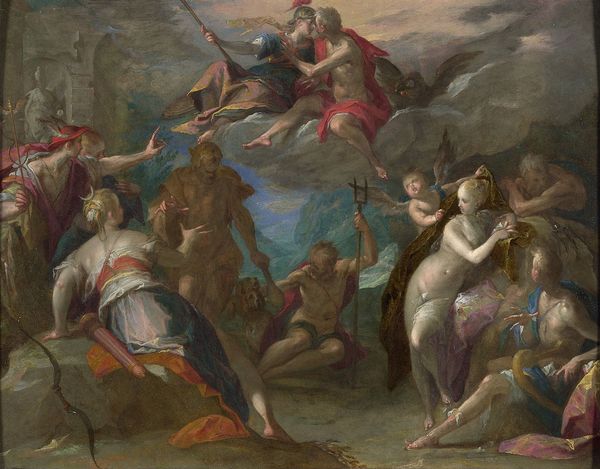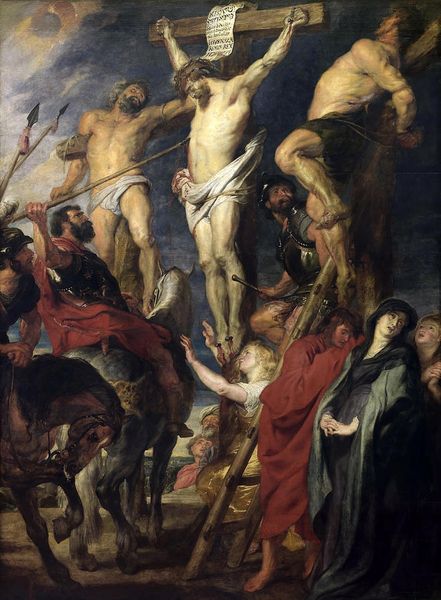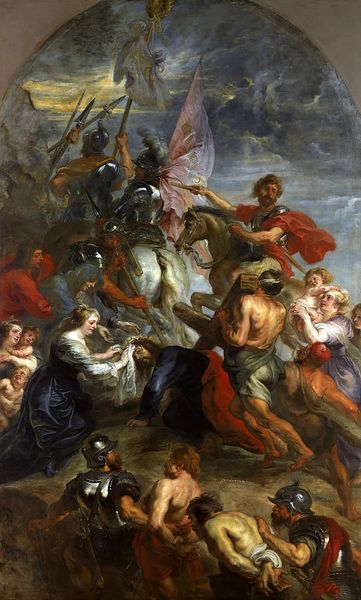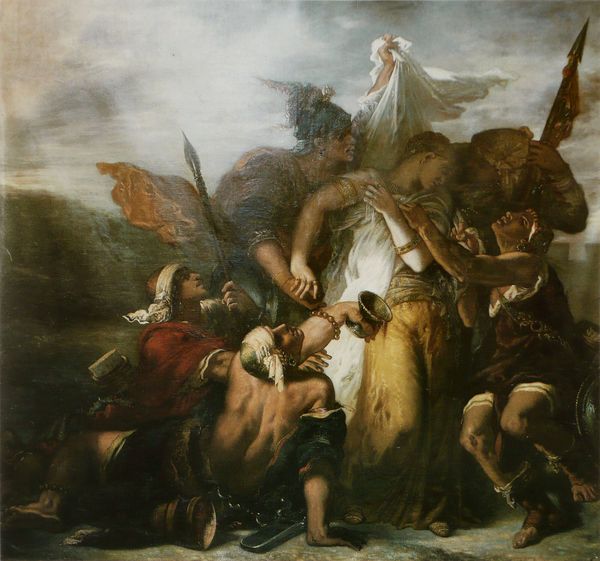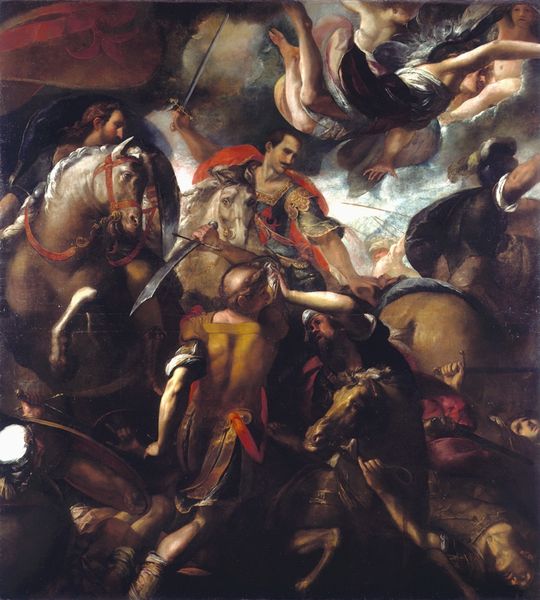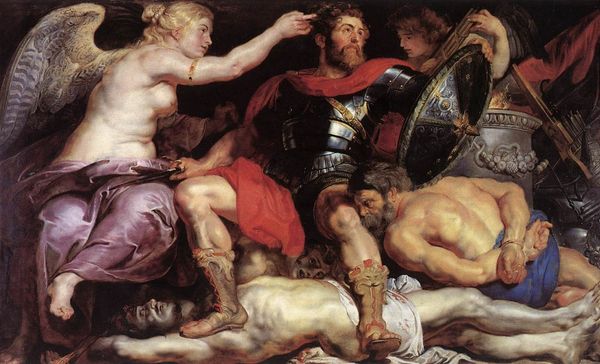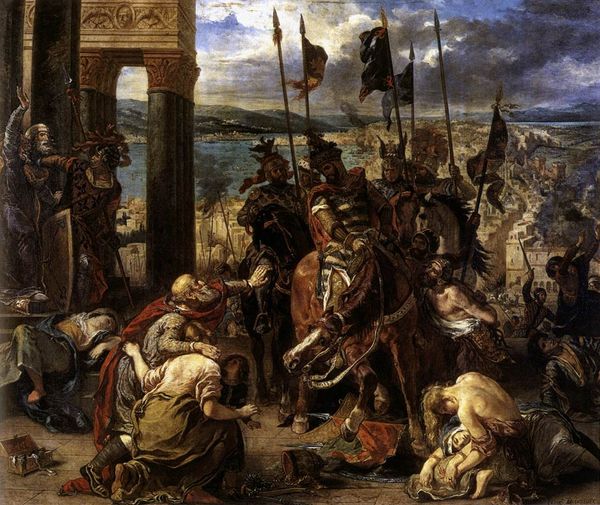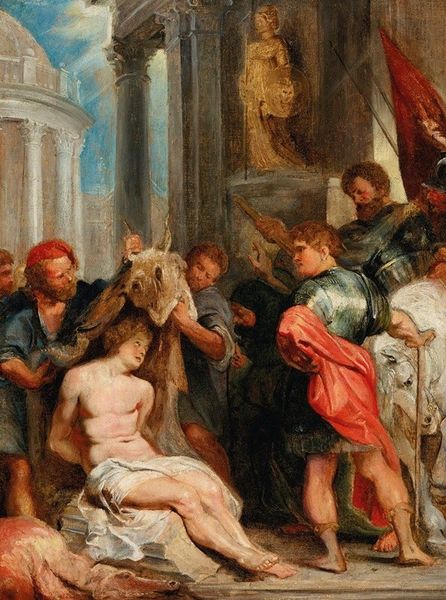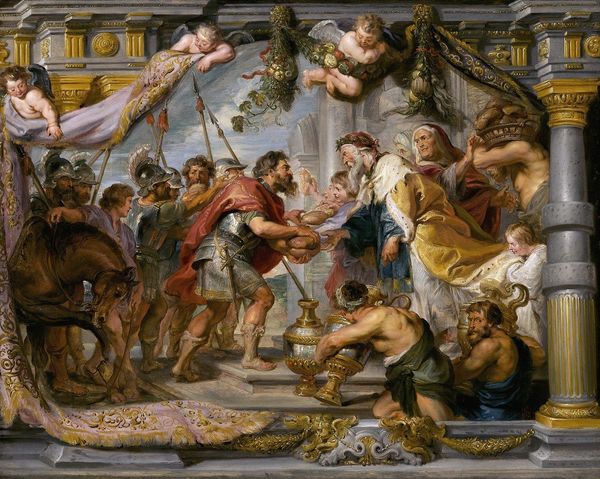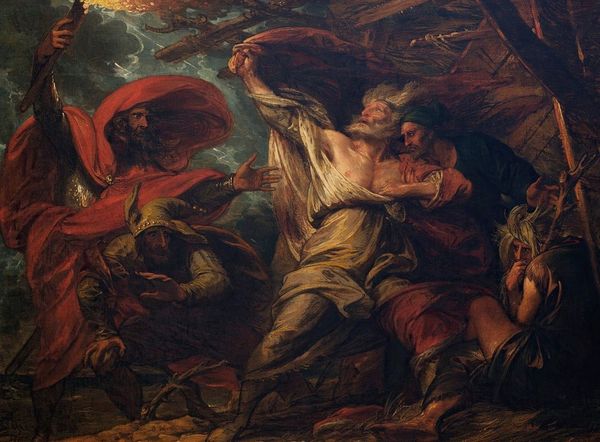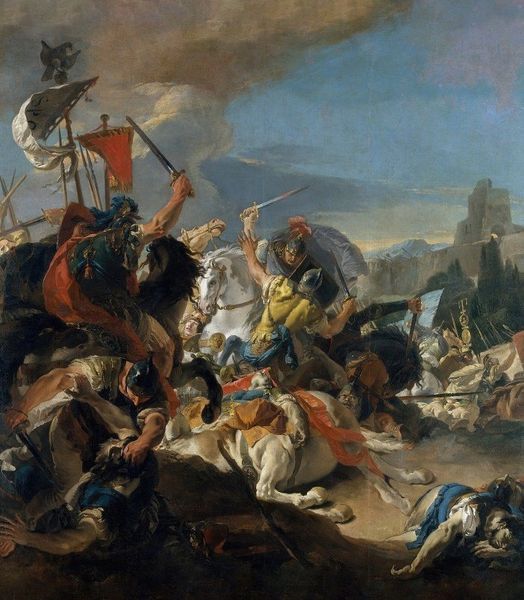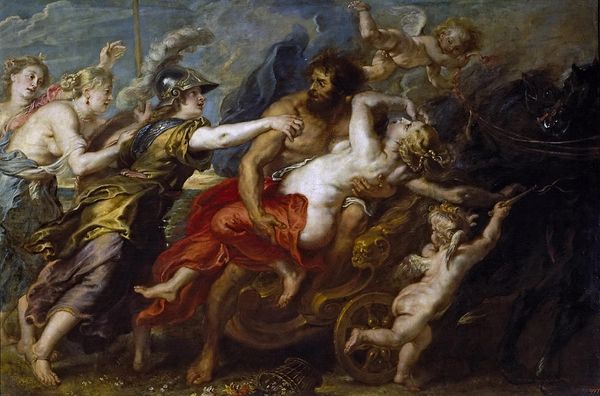
painting, oil-paint
#
narrative-art
#
baroque
#
painting
#
oil-paint
#
figuration
#
oil painting
#
history-painting
#
academic-art
Copyright: Public domain
Peter Paul Rubens painted “The Triumph of Judas Maccabeus,” capturing a triumphant moment in Jewish history through his distinct Baroque lens. The painting reflects the religious and political tensions of 17th-century Europe, particularly the Counter-Reformation, where the Catholic Church sought to reaffirm its authority. Rubens presents Judas as a classical hero, his victory celebrated amidst a tableau of fallen enemies and grateful citizens. However, the glorification of violence and the stark contrast between victor and vanquished raises questions about power, identity, and the cost of freedom. The emotional intensity of the scene, with its mix of jubilation and despair, invites us to consider the complexities of religious and national identity. Rubens was deeply invested in exploring themes of faith, leadership, and conflict, but also reveals the human dimensions of these grand narratives, inviting viewers to reflect on the personal and collective struggles for self-determination.
Comments
No comments
Be the first to comment and join the conversation on the ultimate creative platform.
